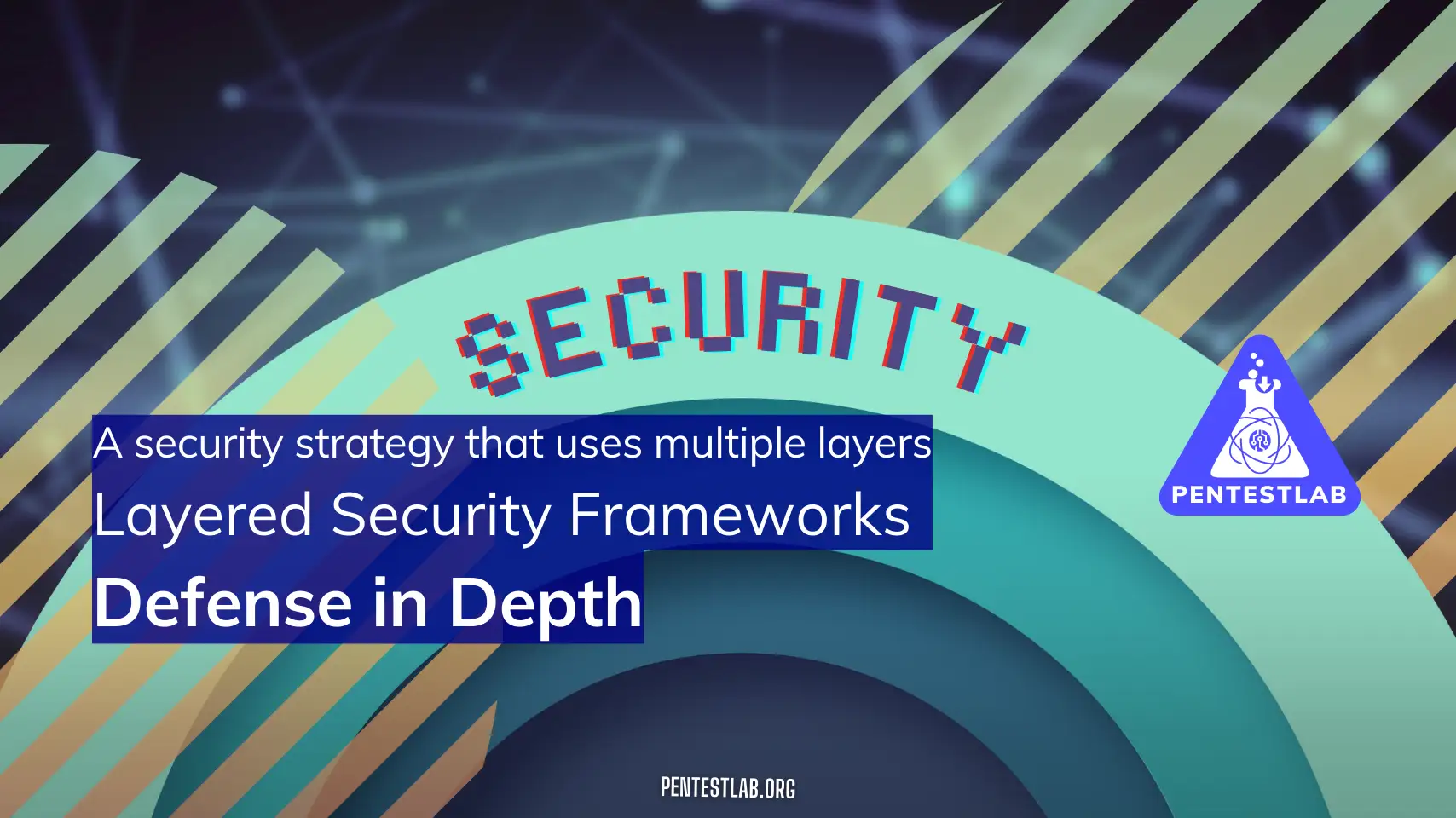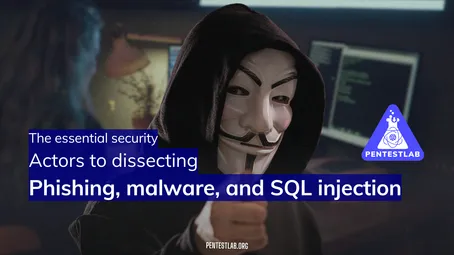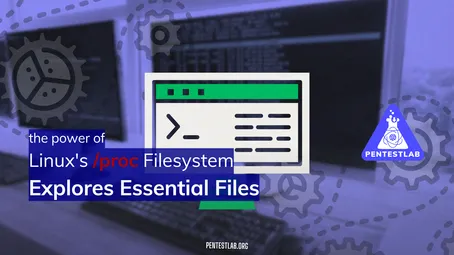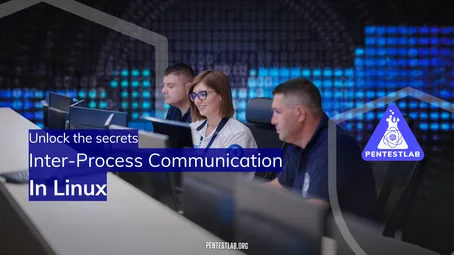Layered Security Frameworks
1. The Concept of Layered Security (Defense in Depth)
1.1 Definition and Philosophy Behind Defense in Depth
Defense in Depth is a security strategy that uses multiple layers of protection to guard an organization’s systems and data. Think of it like a castle: a moat, walls, drawbridges, guards, and gatehouses all exist to slow down or stop attackers. Even if a single layer is bypassed, other layers remain in place to contain or minimize any damage. The main idea is that no single control can make your organization fully secure; rather, multiple overlapping controls help achieve a robust defense.
The philosophy is grounded in the idea that any defensive measure can fail. Due to human error, outdated software, zero-day vulnerabilities, or sophisticated attacks, it’s possible that a single barrier won’t hold. Therefore, you create a series of checkpoints and controls, so attackers have to get through multiple safeguards. That reduces the likelihood of a complete breach and gives defenders more time and opportunities to detect and stop the threat.
1.2 Interplay with the CIA Triad and AAA
-
CIA Triad: Stands for Confidentiality, Integrity, and Availability.
-
Confidentiality ensures only authorized individuals can access certain data.
-
Integrity ensures that the data remains accurate and unaltered.
-
Availability guarantees reliable and timely access to data or resources. Defense in Depth helps protect each facet of the CIA triad because each layer contributes to keeping attackers away from data, detecting tampering, or ensuring continuous service even if one control fails.
-
-
AAA: Stands for Authentication, Authorization, and Accounting (sometimes auditing).
-
Authentication is about verifying an identity (passwords, tokens, biometrics).
-
Authorization is about granting the correct privileges to a verified user.
-
Accounting (or auditing) is tracking user actions and usage. Layered security will involve multiple AAA measures—for example, having multifactor authentication (MFA) at the network perimeter, access control lists (ACLs) on devices, and monitoring or logging solutions that record the activity for later review. Each layer helps ensure robust AAA across the entire environment.
-
2. Layers in Defense in Depth
2.1 Physical Security (Locks, Surveillance)
The first line of defense often is physical security. You can’t protect data if anyone can walk into your server room or unauthorized personnel can just wander around your critical infrastructure.
-
Locks and Access Cards: Using key cards or biometric locks on data centers, server rooms, and other restricted areas.
-
Surveillance Cameras: Monitoring entry and exit points and critical areas. Footage is often used for forensic analysis if an incident occurs.
-
Security Guards and Policies: Professional guards enforce entry policies. Visitors might need to sign in or wear a visitor’s badge.
2.2 Network Security (Firewalls, IDS/IPS)
Once the physical space is secured, the next concern is the network.
-
Firewalls: Inspect incoming and outgoing data traffic based on predefined rules. They’re like the gatekeepers that ensure only approved data flows are allowed.
-
Intrusion Detection Systems (IDS) and Intrusion Prevention Systems (IPS): These systems monitor network traffic for suspicious patterns. An IDS alerts you when it detects malicious activity, while an IPS can block or drop malicious packets automatically.
-
VPNs and Segmentation: Securing communication between offices or remote users with encrypted VPN tunnels. Segmenting the network (e.g., splitting finance from engineering) limits the damage an intruder can do once inside.
2.3 Endpoint Security (Antivirus, Device Encryption)
Even if the network perimeter is heavily guarded, attackers often target end-user devices (laptops, desktops, mobile phones).
-
Antivirus/Antimalware: Scans and quarantines malicious files or processes on the endpoint.
-
Host-Based Firewalls: Localized firewalls that protect an individual device.
-
Encryption: Encrypting disks or data storage to ensure that if a device is stolen or lost, the data remains unreadable.
-
Patch Management: Regularly updating operating systems and software to close known vulnerabilities.
2.4 Application Security (WAFs, Secure Coding Practices)
Applications are a common point of attack, particularly public-facing web apps.
-
Web Application Firewalls (WAFs): Filter and monitor HTTP traffic for common attacks like SQL injection, cross-site scripting (XSS), and more.
-
Secure Coding Practices: Writing code that minimizes vulnerabilities—avoiding hard-coded credentials, using parameterized queries, input validation, etc.
-
Application Hardening: Removing unnecessary services, reducing permissions, and using well-maintained frameworks.
2.5 Policy/Procedural Security (Security Training, Incident Response)
No matter how advanced your technical controls, they can be undermined by poor security awareness or unclear procedures.
-
Security Training: Educating employees about phishing, social engineering, secure password management, and data handling.
-
Incident Response (IR) Plan: Steps for detecting, containing, and eradicating a threat, plus recovery and lessons learned. IR teams need well-defined roles and responsibilities to prevent confusion.
-
Change Management: Systematically evaluating the impact of new deployments or updates to avoid accidental exposures.
3. Designing a Defense-in-Depth Strategy
3.1 Assessment of Organizational Risk and Critical Assets
Start by identifying what’s most important. In a university context, this might be research data, student records, or intellectual property. In a corporate environment, it could be customer data or proprietary information.
-
Risk Assessment: Evaluate which threats are most likely and their potential impact. Determine the current controls and their effectiveness.
-
Asset Identification: Catalog critical servers, applications, and data repositories. Map out data flows to see where and how data is stored or transmitted.
3.2 Selecting and Integrating Multiple Security Controls
Based on the assessment, choose controls that match the risk profile. For instance, if you handle very sensitive data, you might:
-
Deploy stronger encryption for data at rest and in transit.
-
Upgrade network security with next-generation firewalls, IDS/IPS, and zero-trust segmentation.
-
Implement strict access controls with MFA and role-based access policies.
Integration is key—ensure that logs from various layers feed into a Security Information and Event Management (SIEM) system so you can correlate events and detect attacks that cross multiple layers. For example, if a single IP is triggering an unusually high number of authentication failures across different endpoints, your SIEM can flag it as a potential brute-force attack or compromised host.
3.3 Ongoing Monitoring, Testing, and Improvement
Defense in Depth isn’t a “set it and forget it” approach. Cyber threats evolve continuously, so your security posture must adapt.
-
Monitoring: Constantly watch for anomalies through centralized logging and alerting systems.
-
Penetration Testing: Regular tests by internal teams or external consultants to uncover new vulnerabilities and measure how well your layers respond.
-
Red Team Exercises: Ethical hackers simulate real-world attack scenarios. This stress-tests both technical controls and your incident response capabilities.
-
Review and Update: Use the findings from pentests and real incidents to refine controls. Patch vulnerabilities swiftly, and adjust security policies based on new threats.
4. Enterprise Implementations
4.1 Typical Corporate Frameworks (NIST, ISO 27001)
Large organizations often align their layered security approach with recognized frameworks:
-
NIST (National Institute of Standards and Technology) Cybersecurity Framework: Provides guidelines on how to identify, protect, detect, respond, and recover from cyber incidents. It’s frequently used by U.S. federal agencies and private businesses.
-
ISO 27001: An international standard that describes how to manage information security. It outlines requirements for establishing, implementing, maintaining, and continually improving an Information Security Management System (ISMS).
These frameworks offer structured methodologies to ensure each layer in the security stack meets minimum best practices. They also emphasize documentation, continuous improvement, and risk management, which are the hallmarks of successful Defense-in-Depth strategies.
4.2 Real-Life Examples of Layered Security in Large Organizations
-
Financial Institutions: Often have a combination of robust physical security (armed guards, secure vaults), strict network segmentation (separating customer-facing systems from internal financial processing), strong authentication (multi-factor for all employees), and advanced application firewalls. They also frequently perform red team drills to test employee readiness.
-
Healthcare Providers: Must comply with HIPAA (in the US) or similar data protection laws elsewhere. They typically employ strict physical security for servers storing patient data, network-level encryption (VPNs) for telemedicine, endpoint controls on doctors’ laptops, and ongoing staff training for HIPAA compliance to avoid data leaks.
4.3 Balancing Usability, Performance, and Security
One of the biggest challenges in implementing Defense in Depth is ensuring that security measures do not cripple the user experience or operational performance. For instance:
-
If you enforce too many authentication steps (e.g., requiring a token, a fingerprint, a password, a facial scan), users may find it cumbersome and might seek ways around it (writing down passwords, leaving tokens in the open).
-
Overly restrictive network policies or application controls might hinder legitimate business processes or research collaborations.
-
Excessive monitoring can strain resources or create a flood of alerts—leading to alert fatigue.
The solution lies in risk-based prioritization. You apply the strictest measures to high-risk areas (e.g., core databases with confidential records) while using less-intensive controls for low-risk systems. This ensures security is integrated in a way that supports business or educational objectives rather than undermining them.
Bringing it All Together (Summary)
Layered Security, or Defense in Depth, means applying multiple complementary security measures at every level of your environment—physical, network, endpoint, application, and procedural. This structure aligns with critical models like the CIA Triad (ensuring confidentiality, integrity, and availability) and AAA (authentication, authorization, and accounting).
A successful layered security strategy requires:
-
Accurate Risk Assessment: Know where your data lives, identify likely threats, and prioritize resources accordingly.
-
Robust Technical Controls: Firewalls, intrusion detection/prevention, encryption, secure coding, and more, each reinforcing the other.
-
Clear Policies and Training: People are the weakest link if they aren’t trained or if policies are non-existent or confusing.
-
Ongoing Vigilance: Monitor logs, perform regular penetration tests, and keep systems updated to address emerging threats.
-
Framework Alignment: Use established standards (NIST, ISO 27001) as a blueprint for building and maintaining a secure environment.
Like a well-structured pentester’s approach, understanding these layers helps you see where organizations are most vulnerable and what measures can be put in place to protect against a diverse range of threats. By studying how these layers work together—and practicing in lab environments or in penetration testing simulations—you’ll learn to spot gaps, prioritize fixes, and strengthen the overall security posture of any system you might be tasked with protecting or testing.
Defense in Depth is an ongoing journey. By mastering these concepts, you’ll be positioned to not just find security weaknesses during a pentest, but also propose feasible, layered solutions that protect critical data and assets in the real world.
Test Your Knowledge
Which of the following best describes the relationship between the CIA Triad and Defense in Depth?
Why is ongoing monitoring critical in a defense-in-depth strategy?
In a zero-trust architecture, which defense-in-depth principle is most emphasized?
Which is the most effective approach when choosing controls for different layers in Defense in Depth?
What is a challenge when implementing multiple layers of security in an enterprise?




